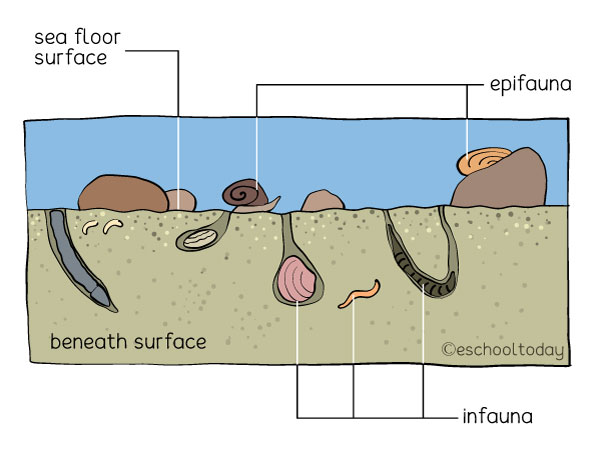- Aquatic Ecosystems
What is Benthos in aquatic ecosystems?
Benthos, a term derived from the Greek, means ‘depths of the sea’. The Benthos is a group term for all the organisms and communities living at the surface and beneath the surface of the seafloor. These organisms are mostly invertebrates (organisms that have no backbones) such as the Anthozoa, octopus, and sea star.

On the ocean floor, there is a complex interaction between living and non-living factors. Benthos can also occur in shallow waters.
Infauna
Infauna includes the bacteria, plants, and organisms that live in the sediment or layer of particles at the seafloor. These are sediments such as fish droppings, dead organic matter, and rock debris that perhaps sink to the bottom of the sea. Examples of infauna include diatoms, worms, razor clams, bivalve, and decomposers such as bacteria and flagellates.
Epifauna
These are the organisms on the surface of the seafloor that attach themselves to the rocks and debris. Many of these living things (animals) can move. Epifauna plants such as seaweed also grow in the water towards sunlight, although they are usually attached to some rocks or hard substrate. Examples of Benthic epifauna include mussels and snails.
There are also different types of fish that only live at the bottom of the ocean, feeding on infauna and epifauna. They are known as Demersal.
Food webs at the Benthos are interesting in the sense that sunlight usually does not get to that part of the ocean floor, yet there is a unique and complete interaction of biotic and abiotic factors there. For example, most of the infauna and epifauna help to breakdown organic matter, enriching their environment with minerals and nutrients.
